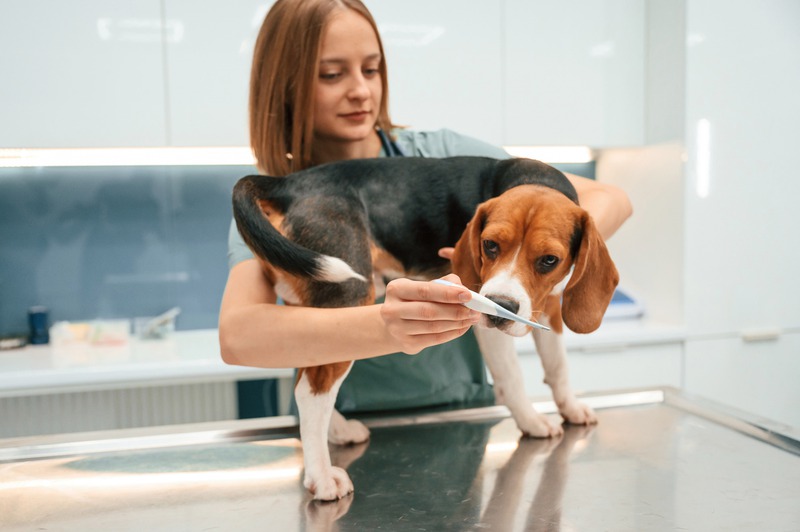As pet parents, we sometimes notice a gunky substance in the corners of our furry friends’ eyes. It may look benign – perhaps a sleepy seed we casually wipe away with our thumb. But are we missing something more significant? Eye discharge in pets can be a mere byproduct of natural cleansing or a red flag for a more serious issue. In this piece, we’ll examine the various colors of discharge that can emerge from our pets’ eyes and what each may herald for their health.
Clear Discharge
If you spot a clear and watery film near your pet’s eyes, don’t be too alarmed. Often, this is akin to the tearful reaction we get when chopping onions or when dust takes a detour into our eye sockets. Your pet’s clear discharge could be a response to similar minor irritants. Here’s what clear discharge generally signifies:
-
Mild allergy reactions to pollen or dust
-
Response to wind or cold weather
-
Slight eye irritation
However, if you notice an increase in tear production or your pet’s eyes seem to be constantly watery, it’s worth paying a visit to your vet, as it may point to blocked tear ducts or other concerns.
White or Gray Mucus
When we move into the realm of white or gray mucus, we might be stepping into dry eye territory. Medically known as keratoconjunctivitis sicca, dry eye occurs when pets don’t produce enough tears to keep their eyes moist. Their bodies compensate by producing a thicker discharge. Signs to watch for include:
-
Sticky, white or gray mucus in the corners of the eyes
-
Redness and irritation
-
Frequent blinking or squinting
If you think your pet might be suffering from dry eye, seeking professional help is essential. Left untreated, it can result in more severe damage or even loss of vision.
Yellow or Green Discharge
Yellow or green discharge often indicates an infection. Unlike the benign clear drips, these neon signals are usually a sign that your pet needs medical attention. Whether it’s conjunctivitis, commonly known as pink eye, or another type of infection, your vet can provide a diagnosis and treatment plan. Common symptoms accompanying yellow or green discharge include:
-
Consistency resembling pus
-
Foul odor
-
Swelling or redness
-
Behavioral changes such as pawing at the eyes
When your companion exhibits these signs, it’s crucial to schedule a vet appointment to get to the bottom of the issue.
Recognizing the Signs of Serious Eye Problems
It’s a common misstep to dismiss eye discharge as a simple impediment that will clear up on its own. However, early identification of symptoms plays a vital role in the health and vision of your pet. Several clues indicate it’s time to escalate the concern to a professional, such as:
-
Changes in the eye’s appearance (cloudiness, change in color)
-
Visible discomfort or pain
-
Behavioral changes like lethargy or irritability
-
Aversion to light
If you’re observing these symptoms, postponing a vet visit is not advisable. Early intervention can mean the difference between a simple remedy and a complex treatment or, worse, irreversible damage.
Finding Specialized Care for Your Pet’s Eyes
For more complicated or persistent eye conditions, seeking out specialized care may be necessary. Veterinary clinics like Northwest Animal Care Hospital provide advanced veterinary services, including ophthalmology. Remember, expertise in this field is essential for diagnosing and treating intricate eye issues in pets.
Educating Yourself on Pet Eye Health
Knowledge is power, and being informed is pivotal in our pets’ eye health. Remember that some breeds are more susceptible to eye issues than others, so understanding breed-specific risks can be particularly beneficial. Always check your pet’s eyes regularly for any sign of abnormal discharge or discomfort, and don’t hesitate to contact your vet with concerns.
Moreover, to stay on top of the latest information regarding common eye issues in pets, it’s worthwhile to bookmark resources that provide valuable insight. This page will show valuable information and details about common eye problems in pets, helping you to be a more informed and proactive pet parent.
Preventing Eye Problems in Pets
Prevention is always better than a cure, and when it concerns our pets’ eyes, there are proactive measures from veterinary ophthalmology in Kirkland, WA, that we can take. Here’s how to keep those peepers healthy:
-
Regular Cleaning: Use a damp cloth to gently wipe away any dirt or discharge around the eyes, being careful not to touch the eye itself.
-
Protect from Irritants: Minimize your pet’s exposure to smoke, chemicals, and potential allergens.
-
Proper Grooming: Keep fur trimmed around the eyes to prevent irritation and vision obstruction.
-
Yearly Check-ups: Ensure your pet gets an annual wellness exam with an eye check.
Final Thoughts
Our pets can’t tell us when something’s wrong, especially with such a delicate organ as the eye. It’s our job as caretakers to read the signs. While eye discharge can occur for different reasons, ranging from benign to severe, understanding what various colors might indicate is a crucial aspect of pet care. Take action on peculiar symptoms, and take into account the value of specialized veterinary help. By being vigilant and informed, we can ensure the best possible eye health for our beloved companions.


